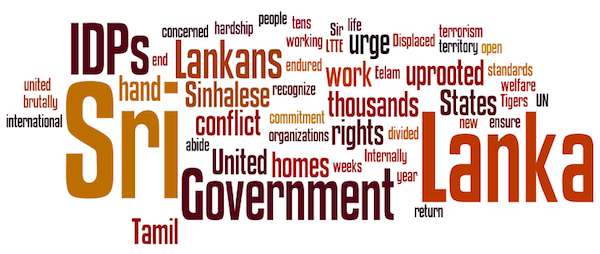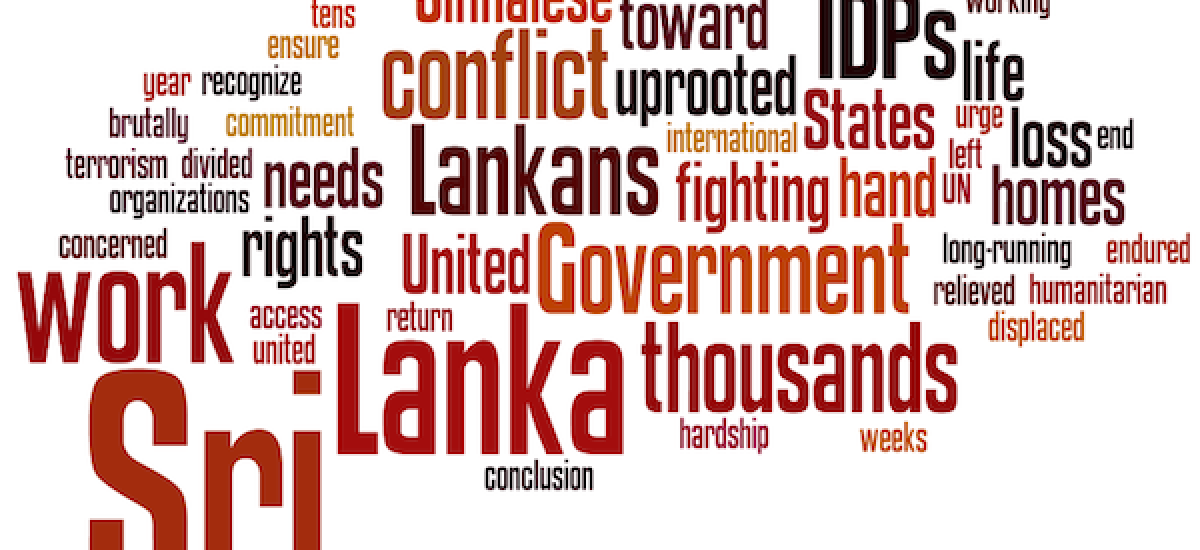The Norwegian newspaper Afterposten published on 7th May a cable from the Wikileaks tranche of US diplomatic cables (confidential briefings) dealing the US government’s response to the end of war in Sri Lanka. Wikileaks on Sri Lanka: A breakdown and implications was an in-depth account we exclusively published last year exploring the fallout of the so-called ‘Cablegate’ on issues related to Sri Lanka, read to date by well over 20,000. As a BBC news report flagging this latest cable on Sri Lanka notes,
“The Sri Lankan government rejected a surrender offer by Tamil Tiger rebels at the end of the war, reports released through the Wikileaks website say. They say that Defence Secretary Gothabaya Rajapaksa dismissed US pressure to allow a mediated surrender with the words “we’re beyond that now”. The leaked US cables suggest requests for the International Red Cross to go into the war zone were refused. Sri Lanka’s government has repeatedly denied all these accusations.”
In light of the recently released report by the UN Panel appointed by the Secretary General to look into issues of accountability in Sri Lanka, this is old hat. What this cable does offer is a glimpse into the drafting process of official statements in general and in this case, a statement by the US State Department dealing with one of the most important events on Sri Lanka in 2009. It also reveals how the edits can reflect US concerns over the end of the war.
The draft text of the statement, taken off the cable (Situation Report 74) published on Afterposten’s website is as follows,
The United States welcomes the fact that the Liberation Tigers of Tamil Eelam LTTE an organization that has terrorized the people of Sri Lanka for decades, no longer control any territory within Sri Lanka. This 26-year-old conflict has cost tens of thousands of Sinhalese and Tamil lives, uprooted countless Sri Lankans from their homes, and has brutally divided the nation. We especially recognize the tremendous loss of life and hardship endured by civilians in northern Sri Lanka during the past weeks and months.
To truly defeat terrorism, the Government of Sri Lanka must immediately begin to heal the wounds of the conflict and work toward building a democratic, prosperous, tolerant and united Sri Lanka. A lasting peace in Sri Lanka depends on Sinhalese, Tamils and all other Sri Lankans working together to achieve new power sharing arrangements that safeguard and promote the rights of all Sir Lankans.
The United States remains deeply concerned for the welfare of the hundreds of thousands of Internally Displaced Persons (IDPs) uprooted by the recent fighting. We call on the Government to open additional sites for IDPs to ease overcrowding in the existing facilities. We welcome and urge the Government of Sri Lanka to abide by its commitment to return the majority of IDPs to their homes by the end of this year. We also urge the Government to work hand in hand with the UN, ICRC, and non-government organizations to ensure all IDPs are accorded rights and care meeting the highest international standards.
The final text as published on the US State Department website on 19 May was as follows,
The United States welcomes the cessation of fighting in Sri Lanka and the apparent conclusion to its long-running conflict. This 26-year-old conflict has cost tens of thousands of Sinhalese and Tamil lives, uprooted countless Sri Lankans from their homes, left thousands maimed or wounded, and has brutally divided the nation.
The United States remains deeply concerned for the welfare of the hundreds of thousands of internally displaced persons (IDPs) uprooted by the recent fighting. We especially recognize the tremendous loss of life and hardship endured by civilians in northern Sri Lanka during the past weeks and months, and are relieved that this loss of life has ended. We urge the Government to allow humanitarian access to the camps and to work hand in hand with the UN, ICRC, and non-government organizations to ensure all IDPs are accorded rights and care meeting the highest international standards. We are prepared to work with the Government to provide for the basic needs of all of its citizens, and abide by its commitment to return the majority of IDPs to their homes by the end of this year.
To truly defeat terrorism, the Government of Sri Lanka needs to begin to heal the wounds of the conflict and work toward building a democratic, prosperous, tolerant and united Sri Lanka and work toward justice and reconciliation for both sides. A lasting peace in Sri Lanka depends on Sinhalese, Tamils and all other Sri Lankans working together to achieve new power sharing arrangements that safeguard and promote the rights of all Sri Lankans.
Aside from the obvious edit to move the second paragraph in the draft text to the end of the final version, there are some interesting shifts in language and emphasis. A Wordle visualisation highlights some of these.

Visualisation of top 50 words in the draft statement.

Visualisation of top 50 words in the final statement.
Evident in the final version is a greater emphasis on the words ‘thousands’ and ‘conflict’. Each word occurs three times in the final statement, as opposed to two in the draft. The final statement notes, “This 26-year-old conflict has cost tens of thousands of Sinhalese and Tamil lives, uprooted countless Sri Lankans from their homes, left thousands maimed or wounded, and has brutally divided the nation.” Emphasis ours. The draft version does not flag those maimed or wounded. This can reflect US concerns over its own intelligence networks reporting on serious issues that the UN has now made public.
A more telling change is how the statement starts off. In the draft version, there is a strong emphasis on the LTTE and its terrorisation of civilians. It notes, “The United States welcomes the fact that the Liberation Tigers of Tamil Eelam LTTE an organization that has terrorized the people of Sri Lanka for decades, no longer control any territory within Sri Lanka”. In the final version however, the emphasis of this sentence is completely changed. It reads “The United States welcomes the cessation of fighting in Sri Lanka and the apparent conclusion to its long-running conflict”. No mention of the LTTE at all, and the inclusion of the word ‘apparent’ which prefaces ‘conclusion’ and again resonates with concerns the US may even at this time have had over the conduct of the government during the final stages of war.
The final statement also takes a markedly different tone to that in the draft. The draft notes that “To truly defeat terrorism, the Government of Sri Lanka must immediately begin to heal the wounds of the conflict…”. The final statement revises this to “To truly defeat terrorism, the Government of Sri Lanka needs to begin to heal the wounds of the conflict…” The word ‘immediately’ is erased. As noted on this website,
“We also use ‘must’ to express a strong obligation. When we use ‘must’ this usually means that some personal circumstance makes the obligation necessary (and the speaker almost certainly agrees with the obligation.)”
To avoid sounding too sanctimonious, the US eschews the use of ‘must’ and instead posits ‘needs’ which is, not just a simple grammatical shift. As this website notes, the use of “must” is when one imposes requirements and the use of “needs to” refers to the basic necessities of humans and also echoes, from a psychological angle, the “higher” needs of humans in Maslow’s hierarchy of needs. The obvious spelling error in this paragraph (Sir, meant to be Sri) is also corrected in the final version, underscoring just how meticulously every word and sentence is crafted for statements such as these. For example, in the final statement, the State Department makes it explicitly clear that the US is “…prepared to work with the Government to provide for the basic needs of all of its citizens…”. There is no record of this willingness in the draft.
Finally, the official statement contains eight sentences, whereas the draft has nine. Whereas the draft version calls on the government to “to open additional sites for IDPs to ease overcrowding in the existing facilities”, for whatever reason, the statement officially released from the US State Department has no mention of this.
A side by side comparison follows, with colour coding to help understand the major edits to the text.

